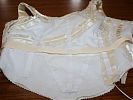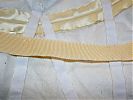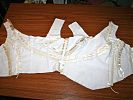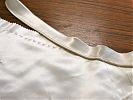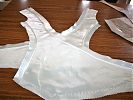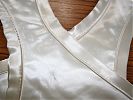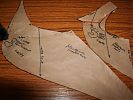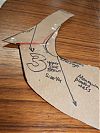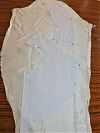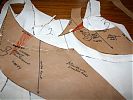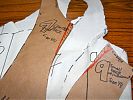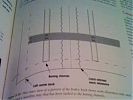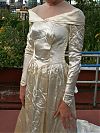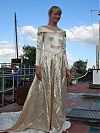The next step in my epic wedding gown project was to properly finish the neckline and armhole edges in advance of the lining. Instead of most lined garments where you construct the outer shell, construct the inner shell, then place the two together, right sides facing and sew around the opening edges, in this case Bridal Couture advises us to construct the outer shell, fold in the opening edge seam allowances, then create the lining, with the opening edges similarly folded inside, and then place the two together wrong sides facing and very carefully fell-stitch along the opening edges, prickstitching the lining where necessary.
So here are the neckline and armhole opening edges, nicely clipped, pressed, and catchstitched:
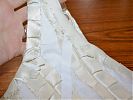
The next step was to add the waist stay, tacked to the boning channels with bottom edge of grosgrain on the marked waistline:

